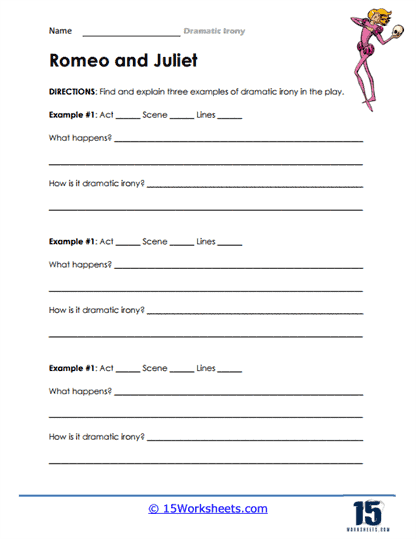Romeo and Juliet

Worksheet Description
This worksheet is centered around the play “Romeo and Juliet” by William Shakespeare and is designed to help students identify and explain instances of dramatic irony within the text. Students are instructed to find three examples of dramatic irony in the play, noting the specific act, scene, and lines where each instance occurs. For each identified example, there is space provided to describe what happens in the scene and to explain why it is considered dramatic irony. The worksheet features an illustration of a female figure akin to a fairy, which may represent a character from the play or the concept of a narrative being guided by unseen forces.
The worksheet aims to educate students on how dramatic irony functions in one of Shakespeare’s most famous tragedies. It teaches them to analyze the play closely and to understand the layers of meaning that dramatic irony adds to the story. By completing the task, students will learn how dramatic irony creates tension and emotional responses in the audience, as they know more than the characters involved in the action. This exercise not only deepens their comprehension of “Romeo and Juliet” but also enhances their overall literary analysis skills.
Find and explain three examples of dramatic irony in the play.
